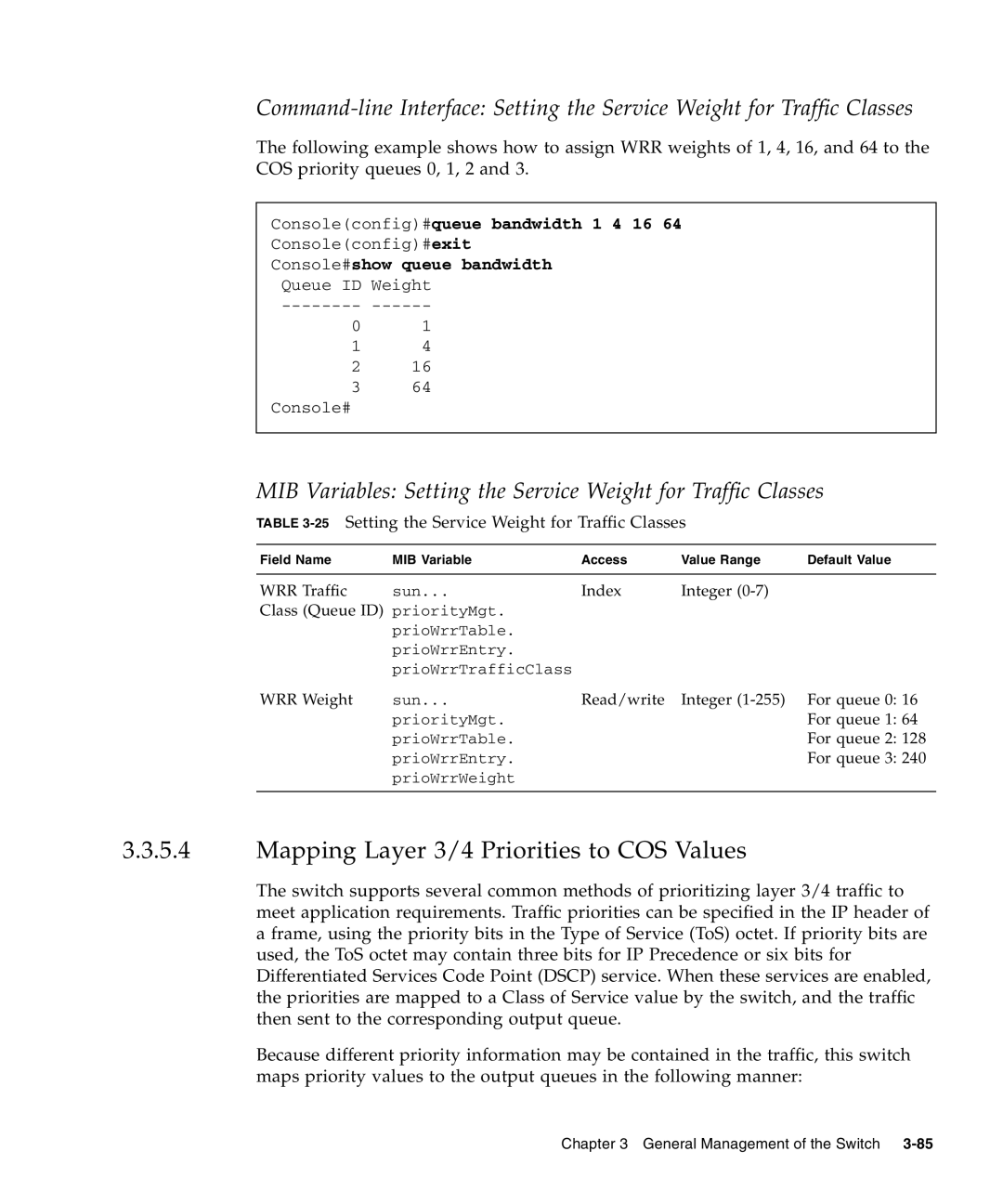
The following example shows how to assign WRR weights of 1, 4, 16, and 64 to the COS priority queues 0, 1, 2 and 3.
Console(config)#queue bandwidth 1 4 16 64 Console(config)#exit
Console#show queue bandwidth Queue ID Weight
01
14
216
364
Console#
MIB Variables: Setting the Service Weight for Traffic Classes
TABLE 3-25 Setting the Service Weight for Traffic Classes
Field Name | MIB Variable | Access | Value Range | Default Value |
|
|
|
|
|
WRR Traffic | sun... | Index | Integer |
|
Class (Queue ID) priorityMgt. |
|
|
| |
| prioWrrTable. |
|
|
|
| prioWrrEntry. |
|
|
|
| prioWrrTrafficClass |
|
|
|
WRR Weight | sun... | Read/write | Integer | For queue 0: 16 |
| priorityMgt. |
|
| For queue 1: 64 |
| prioWrrTable. |
|
| For queue 2: 128 |
| prioWrrEntry. |
|
| For queue 3: 240 |
| prioWrrWeight |
|
|
|
|
|
|
|
|
3.3.5.4Mapping Layer 3/4 Priorities to COS Values
The switch supports several common methods of prioritizing layer 3/4 traffic to meet application requirements. Traffic priorities can be specified in the IP header of a frame, using the priority bits in the Type of Service (ToS) octet. If priority bits are used, the ToS octet may contain three bits for IP Precedence or six bits for Differentiated Services Code Point (DSCP) service. When these services are enabled, the priorities are mapped to a Class of Service value by the switch, and the traffic then sent to the corresponding output queue.
Because different priority information may be contained in the traffic, this switch maps priority values to the output queues in the following manner:
